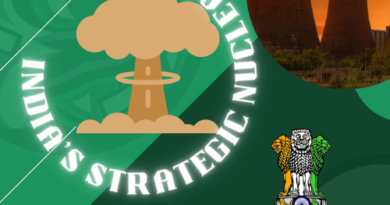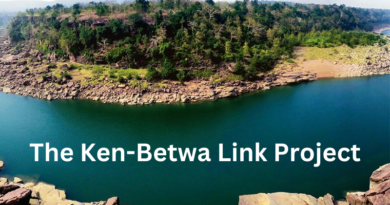Current Affairs 11 April 2023 Ias Banenge
CONTENTS
- Indian Space Policy 2023
- Genome India Project
- Preventive detentions
- Hydrological Status and Outlook System (HydroSOS)
Context:
The Indian Space Policy 2023 was approved by the Cabinet Committee on Security.
The policy seeks to institutionalise private sector participation in the space sector, with ISRO focusing on research and development of advanced space technologies.
Relevance:
GS III: Space
Dimensions of the Article:
- Major Provisions of Indian Space Policy 2023
- Current Status of India’s Space Sector
- Challenges in the Space Sector
Major Provisions of Indian Space Policy 2023
The Indian Space Policy 2023 outlines the roles and responsibilities of key players in the Indian space sector and encourages private sector participation. Here are the major provisions of the policy:
- Clarity in Space Reforms: The policy aims to provide clarity in space reforms and promote private industry participation to drive the space economy opportunity for the country.
- Roles and Responsibilities: The policy delineates the roles and responsibilities of Indian Space Research Organisation (ISRO), space sector PSU NewSpace India Limited (NSIL), and Indian National Space Promotion and Authorization Center (IN-SPACe).
- NSIL: Strategic activities related to the space sector will be carried out by NSIL, which will work in a demand-driven mode.
- IN-SPACe: IN-SPACe will be the interface between ISRO and non-governmental entities.
- ISRO: ISRO will focus its energies on developing new technologies, new systems, and research and development. The operational part of ISRO’s missions will be moved to the NewSpace India Limited.
- Private Sector Participation: The policy will allow the private sector to take part in end-to-end space activities that include building satellites, rockets, and launch vehicles, data collection, and dissemination.
- Use of ISRO facilities: The private sector can use ISRO facilities for a small charge and is encouraged to invest in creating new infrastructure for the sector.
- Increase in Share of Global Space Economy: The policy will help India increase its share in the global space economy substantially from less than 2% to 10% in the future.
Current Status of India’s Space Sector
India’s space sector has gained global recognition for its cost-effective satellite building capabilities. Here are some of the current developments in India’s space sector:
- Peaceful and Civilian Use: India continues to advocate for peaceful and civilian use of outer space and opposes any weaponization of space capabilities or programs as part of its commitment to the Geneva Conference on Disarmament.
- ISRO: ISRO is the 6th largest space agency in the world and holds an exceptional success rate.
- Private Space Companies: With over 400 private space companies, India ranks fifth globally in the number of space companies.
- Defence Space Agency: India has recently established its Defence Space Agency (DSA) supported by the Defence Space Research Organisation (DSRO). The DSA has the mandate to create weapons to “degrade, disrupt, destroy or deceive an adversary’s space capability”.
- Defence Space Mission: The Indian Prime Minister launched the Defence Space Mission at the Defence Expo 2022, Gandhinagar.
- Expanding Satellite Manufacturing Capabilities: India’s satellite-manufacturing opportunity is expected to reach USD 3.2 billion by 2025 (up from USD 2.1 billion in 2020).
- SAMVAD Program: To encourage and nurture space research among young minds, ISRO launched its Student Outreach Program called SAMVAD at its Bengaluru facility.
Challenges in the Space Sector
- Lack of Regulations on Commercialisation: The rise of private companies launching satellites for internet services (such as Starlink-SpaceX) and space tourism is accelerating the commercialization of outer space. Without a proper regulatory framework, rising commercialisation may lead to monopolization in the future.
- Rising Space Debris: As more outer space expeditions take place, space debris accumulates, and even small pieces can damage spacecraft due to the high speed at which objects orbit the Earth.
- China’s Space Leap: China’s space industry has grown rapidly, and it has launched its own navigation system, BeiDou. The participation of Belt Road Initiative (BRI) members in China’s space sector may solidify China’s global position and lead to the weaponization of outer space.
- Increasing Global Trust Deficit: An arms race for the weaponization of outer space is creating an environment of suspicion, competition, and aggressiveness across the globe, which could lead to conflict. It could also put at risk the entire range of satellites, as well as those involved in scientific explorations and communication services.
-Source: The Hindu
READ MORE – India-Japan Defence Policy Dialogue |Ias Banenge
Context:
Government aims to sequence 10,000 genomes by the end of the year 2023 under the Genome India Project (GIP).
The Department of Biotechnology, Ministry of Science and Technology has sequenced close to 7,000 genomes and 3,000 of these are already available for public access.
Relevance:
GS III: Science and Technology
Dimensions of the Article:
- About Genome
- Genome India Project
- Significance of the Genome India Project
- Challenges of the Genome India Project
About Genome:
- It refers to the complete set of genetic instructions or information that an organism possesses.
- It is made up of DNA, which carries the instructions for the development, functioning, growth, and reproduction of all living organisms.
- The study of genomics involves the analysis of genomes and has led to many breakthroughs in various fields, including medicine and biotechnology.
Genome Sequencing
- Genome sequencing is figuring out the order of DNA nucleotides, or bases, in a genome—the order of adenine (A), thymine (T), cytosine (C), and guanine (G), that make up an organism’s DNA.
Genome India Project
- India’s population consists of over 4,600 diverse population groups, many of which are endogamous.
- These groups have unique genetic variations and disease-causing mutations that cannot be compared to other populations.
- The Genome India Project aims to create a database of Indian genomes to learn about these unique genetic variants and use the information to create personalized drugs and therapies.
- The project was started in 2020 and is inspired by the successful decoding of the entire human genome in the Human Genome Project (HGP).
- The project seeks to better understand the genetic variations and disease-causing mutations specific to the Indian population, which is one of the most genetically diverse in the world.
- By sequencing and analyzing these genomes, researchers hope to gain insights into the underlying genetic causes of diseases and develop more effective personalized therapies.
- The project involves the collaboration of 20 institutions across India and is being led by the Centre for Brain Research at the Indian Institute of Science in Bangalore.
- Other countries, such as the United Kingdom, China, and the United States, also have similar programs to sequence their genomes.
Significance of the Genome India Project:
The Genome India Project (GIP) has significant implications in various fields, including healthcare, agriculture, and global science. Here are the key points of its significance:
- Personalized Medicine: The GIP aims to develop personalized medicine based on patients’ genomes to anticipate and modulate diseases. By mapping disease propensities to genetic variations, interventions can be targeted more effectively, and diseases can be anticipated before they develop.
- Understanding Disease Propensities: GIP can help understand the genetic basis of disease propensities in different populations. For example, variations across genomes may explain why cardiovascular disease leads to heart attacks in South Asians but to strokes in most parts of Africa.
- Agriculture: The GIP can benefit agriculture by understanding the genetic basis of the susceptibility of plants to pests, insects, and other issues hampering productivity. This can reduce dependence on chemicals.
- Global Science: The project is said to be among the most significant of its kind in the world because of its scale and the diversity it would bring to genetic studies. Global science will also benefit from a mapping project in one of the world’s most diverse gene pools.
Challenges of the Genome India Project
Potential for scientific racism and reinforcement of stereotypes: There are concerns that genetic mapping could be used to promote ideas of racial purity and justify discrimination.
- Deepening of social divisions: In a country already divided by identity politics, genetic mapping may further deepen existing social divisions.
- Data privacy and storage concerns: In the absence of a comprehensive data privacy bill in India, there are concerns about the possible misuse of genetic information collected by the GIP.
- Ethical questions about gene modification and selective breeding: The project raises ethical questions about the potential for doctors to privately perform gene modification or selective breeding, which have always been controversial.
- Risk of misuse of genetic information: There is a risk that genetic information collected by the GIP could be misused, either intentionally or unintentionally. The 2018 sentencing of a Chinese scientist who created the world’s first gene-edited babies highlights the seriousness of these concerns.
-Source: The Hindu
Context:
The Supreme Court observed in a judgment that preventive detention laws in India are a colonial legacy and confer arbitrary power to the state.
Relevance:
GS-II: Polity and Governance (Constitutional Provisions, Fundamental Rights), GS-II: Governance (Government Policies and Interventions)
Dimensions of the Article:
- About Preventive Detention in India
- Criticisms of Preventive detention
- The argument in favour of Preventive detention
- Recent SC Judgement on Preventive Detention
About Preventive Detention in India
- As the term suggests – Preventive detention helps to prevent a person from committing a crime.
- Article 22 deals with 2 kinds of detentions:
- Article 22 (3) (b) of the Constitution allows for preventive detention and restriction on personal liberty for reasons of state security and public order.
- According to Article 22 (4)- in case of preventive detention as well, the person being detained should be informed of the grounds of arrest, however, in case the authorities consider that it is against the public interest to disclose certain facts, they need not reveal them.
- The person cannot be detained under preventive detention for more than 3 months unless permission to do so has been granted by an advisory board consisting of 3 judges of the Supreme Court.
- The other way by which the period of detention can be extended beyond 3 months is if the Parliament prescribes a law for it.
- Acts by the Parliament which provide for extension of Preventive detention period beyond 3 months:
- National Security Act (NSA) 1980;
- Conservation of Foreign Exchange and Prevention of Smuggling Activities Act (COFEPOSA) 1974;
- Unlawful Activities Prevention Act (UAPA) 1967, etc.
- Many State legislatures have enacted similar laws that authorize preventive detention.
Criticisms of Preventive detention
- Preventive detention becomes a human rights concern as there have been various incidents of misuse of such laws in India.
- Preventive detention represents the police power of the State.
- No other democratic country mentions preventive detention in its constitution and such laws come into effect only under emergency conditions in democratic countries.
The argument in favour of Preventive detention
- Arbitrary action the State is prevented in India as the areas in the context of which Preventive detention laws can be made are laid down in the 7th Schedule of the Constitution itself.
- In the Union list – laws for Preventive detention can be enacted only for reasons connected with Defence, Foreign Affairs, or the Security of India.
- In the Concurrent list – laws for Preventive detention can be enacted only for reasons connected with Security of a State, the Maintenance of Public Order, or the Maintenance of Essential Supplies and Services.
-Source: The Hindu
Context:
In the recently held United Nations Water Conference 2023, the World Meteorological Organisation’s Hydrological Status and Outlook System offered a data analysis tool for simulation.
Relevance:
GS I: Geography
Dimensions of the Article:
- About Hydrological Status and Outlook System (HydroSOS):
- World Meteorological Organisation
Hydrological Status and Outlook System (HydroSOS): Overview and Objectives
- Hydrological Status and Outlook System (HydroSOS) is an initiative envisioned by the Commission for Hydrology and overseen by the WMO Hydrological Assembly.
- Its aim is to provide crucial global scale information needed to help water users understand the current status of the world’s freshwater systems.
- HydroSOS will be delivered by National Meteorological and Hydrological Services (NMHSs), offering simple and accessible hydrological information to users such as government bodies, basin managers, funding institutions, etc.
Phases of HydroSOS Development:
HydroSOS is being developed in phases, with the first one being a pilot phase (2017-2021). During this phase, pilot basins have been identified in Africa and South Asia. The development of HydroSOS will proceed through several phases:
- Pilot Phase (2017-2021): During this phase, pilot basins were identified in Africa and South Asia.
- Development Phase (2021-2024): The focus of this phase will be on developing an operational system and expanding the coverage to more regions.
- Implementation Phase (2024-2026): This phase will focus on the implementation of HydroSOS in NMHSs and other relevant institutions worldwide.
Benefits of HydroSOS:
- Improved water management: HydroSOS will provide critical information that can help water managers make more informed decisions regarding water management.
- Better water resource planning: HydroSOS will enable better planning for the future by providing information on the hydrological status and outlook of freshwater systems.
- Enhanced disaster risk reduction: HydroSOS will provide information that can help to reduce the risk of hydrological disasters such as floods and droughts.
- Greater data sharing: HydroSOS will promote greater sharing of hydrological data, which is essential for effective water management.
World Meteorological Organisation
- The World Meteorological Organization (WMO) is an intergovernmental organization responsible for promoting international cooperation on weather, climate, and water issues.
- It was established in 1950 and operates under the auspices of the United Nations.
Functions:
- Facilitating international cooperation and coordination in meteorology, hydrology, and related fields.
- Promoting the standardization of meteorological and hydrological observations and measurements.
- Encouraging the development and exchange of meteorological and hydrological information, products, and services.
- Providing guidance and support to National Meteorological and Hydrological Services (NMHSs) and other organizations in the implementation of their programs and activities.
- Supporting research and development activities related to weather, climate, and water issues.
Activities:
- Development of global observing systems for weather, climate, and water.
- Provision of climate and weather services to support decision-making in various sectors such as agriculture, aviation, energy, and disaster risk reduction.
- Coordination of global research programs such as the World Climate Research Programme (WCRP) and the Global Atmosphere Watch (GAW).
- Management of international agreements on climate, weather, and water issues such as the United Nations Framework Convention on Climate Change (UNFCCC) and the Convention on the Protection and Use of Transboundary Watercourses and International Lakes.
Structure:
- The WMO is composed of 193 member states and territories, which are represented by their National Meteorological and Hydrological Services (NMHSs).
- The highest body of the WMO is the World Meteorological Congress, which meets every four years to set the strategic direction of the organization and elect its leadership.
- The day-to-day work of the organization is carried out by the Secretariat, which is headed by the Secretary-General.
- The WMO plays a critical role in addressing global challenges related to weather, climate, and water. Through its programs and activities, it provides essential information and services to support decision-making in various sectors and helps countries to build their capacity to address climate and weather-related risks and opportunities.
-Source: The Hindu





Pingback: Current Affairs 12 April 2023 Ias Banenge - Ias Banenge